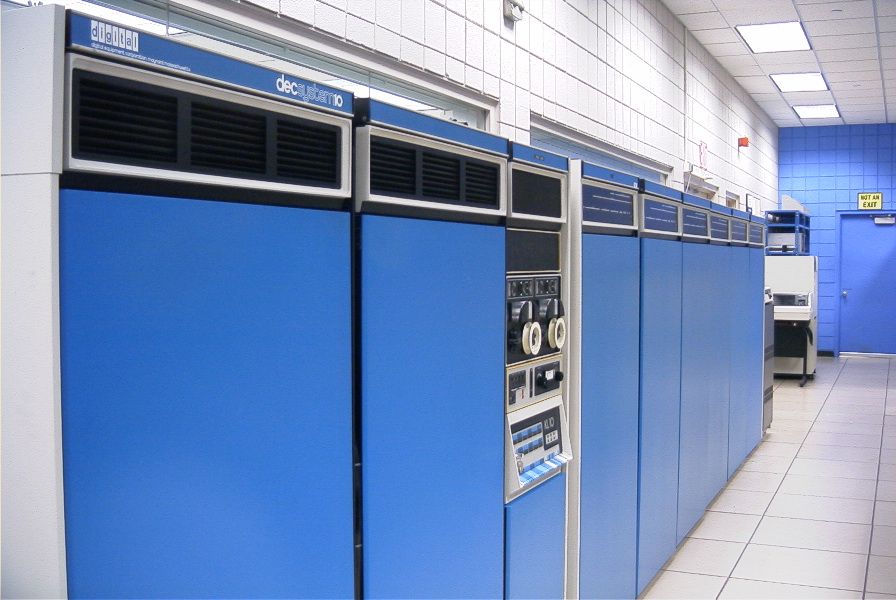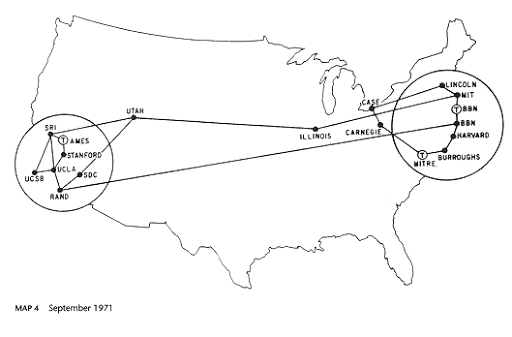
Email was in fact the first of those disruptive revolutions that catapulted the world into the era of networks and the Internet. Thinking about offices today, before the email revolution makes many people smile, but in fact before this innovation, email messages had to be physically carried from one place to another through couriers and postmen.
But in late 1971, a computer engineer named Ray Tomlinson, who worked at Bolt Beranek and Newman (BBN), a contractor for the United States Department of Defense in 1968 that played a key role in the creation of the ARPANET network, precursor to the Internet, sent the first email.
“I sent a series of test messages to myself from one machine to another”
remember now.
“The test messages were completely unrealistic… Most likely the first message I wrote was QWERTYIOP or something like that.”
“QWERTYIOP” has certainly gone down in the history books, but the name Tomlinson, hardly lives in the public mind.
When he is remembered, he is the man who chose the @ symbol as the delimiter in email addresses, but in truth, he is the inventor of email, the application that launched the digital information revolution. breakthrough he made was an evolutionary step so simple but so important that almost no one noticed it until later.
In 1971 he was tinkering with an electronic message program called SNDMSG, which he had written to allow programmers and researchers working on the Digital PDP-10—an early computer connected to the ARPANET—to send messages to one another.

A Digital PDP-10
But this wasn’t exactly email.
Like a number of then-existing messaging programs (the earliest dating back to the early 1960s), SNDMSG worked only locally. It was designed to allow messages to be exchanged between users sharing the same machine. But the insight was that these users could create a text file and deliver it to a remote “mailbox” and then to another host.
“A mailbox was simply a file with a particular name.”
Tomlinson said. “Its only property was that users could write to each other, but they could not read or overwrite what was already there.”
This is all completely obvious to all of us who use e-mail every day today, but it wasn’t the case back then. When Tomlinson was tinkering with SNDMSG, he was working on an experimental file transfer protocol called CYPNET, for transferring files between computers connected to remote sites within the ARPANET. At the time, ARPANET consisted of 15 nodes, located in places such as UCLA in California, the University of Utah in Salt Lake City, and BBN in Cambridge, Massachusetts.

“I had the idea that CYPNET could append to a mailbox file as easily as possible with SNDMSG”
Tomlinson explained.
The way CYPNET was originally written, it sent and received files, but did not allow for appending to a file. So he decided to adapt CYPNET to use SNDMSG to deliver messages to mailboxes on remote machines, over the ARPANET.
“Adding the missing piece was a no-brainer. Just a small addition to the protocol.”
First, he chose the @ symbol to distinguish between messages addressed to mailboxes on the local machine and messages that were addressed over the network.
“The @ sign seemed to make sense. I used the @ sign to indicate that the user was inside another host rather than on the local system.”
He basically invented electronic mail.
BBN had two PDP-10 computers connected to the ARPANET. “The first message was sent between two machines that were literally side by side. The only physical connection they had, however, was through the ARPANET.”
The message flew across the network between two machines in the same room in Cambridge; it was the message QWERTYIOP or something similar. Once Tomlinson was satisfied that SNDMSG was working in , he sent a message to colleagues to inform them of the new feature, with instructions to insert an @ between the user’s login name and the name of his host computer. In fact, Tomlinson’s new program had gone viral (to use terminology from many years later).
“After I gave the improved version of SNDMSG to other researchers (so that there was someone to talk to) virtually all my communication was by e-mail.”
remember. Two years later, a study found that 75 percent of all traffic on the ARPANET was electronic mail. To the engineers and scientists who quickly adopted it as their preferred mode of daily communication, it seemed mostly a logical consequence of the development of the ARPANET. In fact, it took nearly five years for the builders and designers of the ARPANET to sit down and realize that in many ways, email had become the very raison d’être of the new computer network
Follow us on Google News to receive daily updates on cybersecurity. Contact us if you would like to report news, insights or content for publication.
